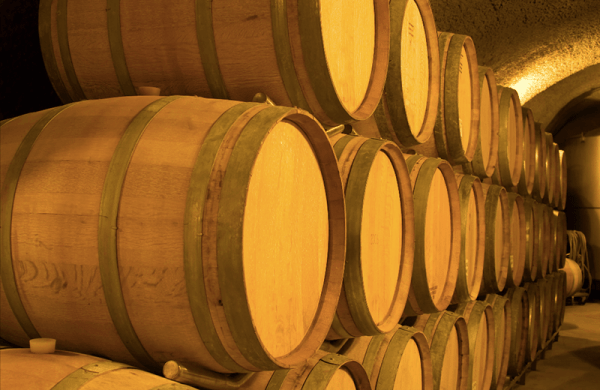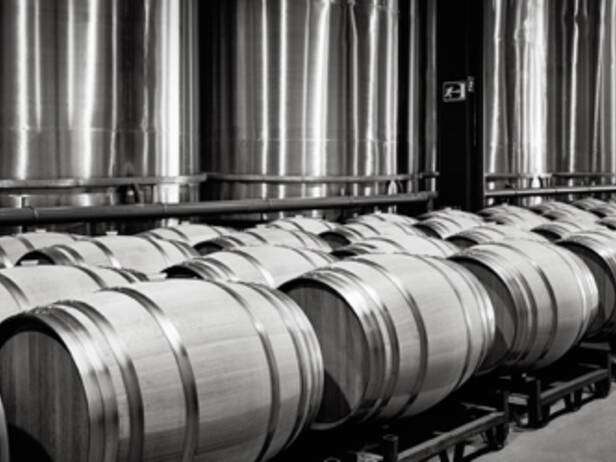
Protect the fruit
It is up to us, the winemakers, to modify and/or control all the physical-chemical, biological and sensory transformations during the aging of the wine in the barrel, depending on the wine we want to market. Therefore, we set out some essential aspects for proper management of the wine in the barrel.
1. Oxygen
Despite the barrel being a permeable container, it does not give the wine the amount of oxygen it needs. You have to understand that during its life the wine goes through different stages, such as the structuring phase (change in the molecular structure of tannins that go from green-reactive tannins to hard), harmonization phase (Tannin/Anthocyanin Polymerization, fat in the mouth) and oxidation phase (drying of the tannins and loss or evolution of the fruit). Therefore, for a wine to last as long as possible in the barrel and the fruit to last over the wood, it is necessary to work on the structuring phase of the wine. Depending on the wine, it is necessary, between alcoholic fermentation and malolactic fermentation, to provide between 8-12 ml/l of oxygen in a controlled way over time and that the daily dose provided is lower than the dose that the wine can consume, taking into account not accumulating dissolved oxygen in the wine.
2. Malolactic Fermentation
Putting the wine into barrels early favors the aromatic range by different sulfur compounds given during the fermentation in the barrel, such as furfuryl thiol; a compound responsible for the aroma of coffee. In addition, and due to the conditions of the wine at that time, low pH and the anthocyanins still mostly in free form polymerize little by little with the help of oxygen, forming an ethylene bridge. Therefore, the color of the wine is stabalized and the decrease is reduced finalizing the malolactic fermentation. This molecular change makes the wine much fatter on the palate.
In addition, If the barrel is new, the contribution of ellagitannins favors the structuring of the wine.
3. Temperature
Barrel aging must be performed between 12-15ºC. If the temperature is lower than that mentioned it causes an accumulation of dissolved oxygen in the wine. However, higher temperatures cause a significant oxidation of the wine causing the destruction of anthocyanins and, consequently, loss of color as well as increasing the risk of the development of microorganisms.
Another factor to take into account in addition to the temperature of the wine is the humidity in the barrel room. Aspects that affect the decline of the wine in the barrel and consequently the evolution of the wine. High temperatures allow greater loss from the wine and are also harmful to aging. However, moisture must be between a minimum of 65% and a maximum of 80% . The lower the humidity we achieve evaporation of the wine water and therefore, we increase its concentration. However, the risk of shrinkage, the greater evolution of the fruit, the greater supply of oxygen and the drying out of the wood cause a greater risk of leaks.
But when the humidity is high, the loss is less but increases the risk of fungi and consequently strange odors in the environment and in the aging wine. Depending on these two factors, the decrease in wine in the barrel ranges between 2% and 8%.
4. Turbidity
Depending on this, we will carry out more or less racking. High turbidity implies a higher concentration of microorganisms and possible biological alterations, in most cases negative, hence the importance of having the wine in barrels with an index lower than 40 NTU. It is also important to know that in the first months of aging and especially before the summer begins, it is necessary to rack to reduce the microorganism content and achieve a lower turbidity. It is also necessary to periodically control the turbidity of the wine since if it increases over time, this may be because the microorganisms are working and therefore modifying the profile of the wine.
5. Sulfurous and sulfuring
In order not to take unnecessary risks, we must maintain molecular sulfur of between 0.4-0.6 mg/l, equivalent to 20-40 mg/l of free SO2 depending on the pH, degree and temperature, otherwise we favor the development of different microorganisms. It is also important to sulfur the barrels in each transfer or when they come from another wine to avoid possible contamination. The dose of sulfur tablets must be at least 5 g per barrel and take into account that this increases the free sulfur in the wine by between 5-7 mg/l.
6. Barrel filling
Difference between new and old barrels: the new barrel has a greater absorption capacity, so it must be refilled more often to keep everything at the same level and thus avoid formation of an air surface in contact with the wine. In this case, we may have as a consequence excessive aeration (maturation of the fruit) or the development of aerobic microorganisms such as yeast or acetic bacteria. Otherwise we will find the same wine with a different evolution.
Related news
How to prepare the wine for aging. (part 1)
A stylist is the professional who analyzes you and decides how to enhance your virtues and hide your flaws so that others like you. Wood does the same with the fruit we have obtained from the grape with care and affection. Therefore, aromatic expression is the first thing that comes to mind when we talk about the involvement of wood in wines.
